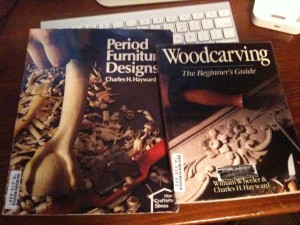I love woodworking and I love books, so….
It seems every week I stumble across another oldie but goody while browsing that damnable internet. This week while working up some future Hand Tool School lessons, I went down the Charles Hayward rabbit hole. I already have his “Practical Woodworking” and “Woodworking Joints” titles so I knew I was in for a treat with these two.
I already have his “Practical Woodworking” and “Woodworking Joints” titles so I knew I was in for a treat with these two.
With so much talk of Moxon, Nicholson, and Roubo we tend to forget that there have been some pretty influential woodworking writers within “recent” history. Robert Wearing has gained influence lately thanks mostly to Christopher Schwarz. In fact Mr. “Oprah” Schwarz shed a little light on Charles Hayward for me some time ago when he mentioned “Woodworking Joints” in a blog post. I like many others scrambled and fought like brides to be at a wedding gown sales to get a copy before the prices succumbed to the Schwarz effect.
These two “new” books illustrate that albeit powerful, the Schwarz effect does eventually wane as I was able to get them both for just a few dollars.
“Period Furniture Designs” is mostly line drawings of typical period forms. It also covers in detail, the details of carvings, intricate joinery, and molded edges. What I like most is that the designs covered are purely English in origin and not diluted by American/colonial influences as I so often see on these shores. The English styles more often have greater embellishment with the carvings and take each stylistic point of the specific periods to the limit. These are pieces of furniture made by a world power during the peak of it’s imperialistic urges. They make quite a statement and this book is great if for nothing else than lots of inspiration and understanding of how these iconic pieces are put together.
“Woodcarving” is not too dissimilar from the myriad of other carving books out there, but based on how much I have enjoyed Mr. Haywood’s writing I thought the $2 price tag was well worth it. So far, only halfway through I am not disappointed. Not only are there great drawings of classical architectural carvings, there are a great number of exercises designed to step you through what appear to be horribly complex designs. As with just about all woodworking it is refreshing (and sometimes disappointing) when you learn that taken step by step, these processes are not hard at all.
I could post a more exhaustive review, but with so many copies of these books available at online used book sellers, you can get a steal and see for yourself! Let’s just say I recommend both of them.


